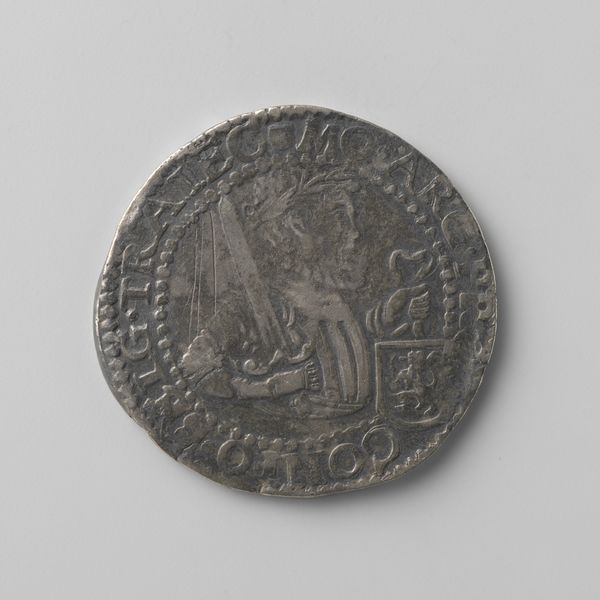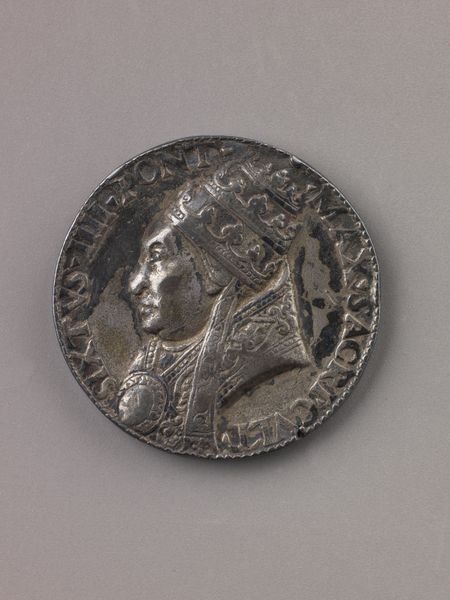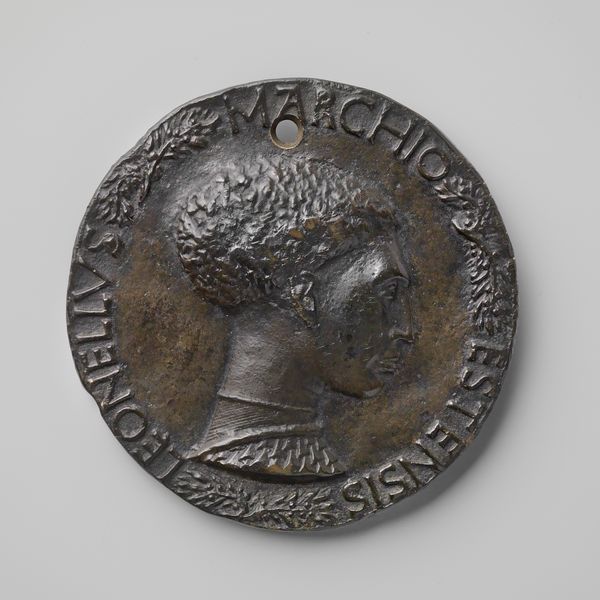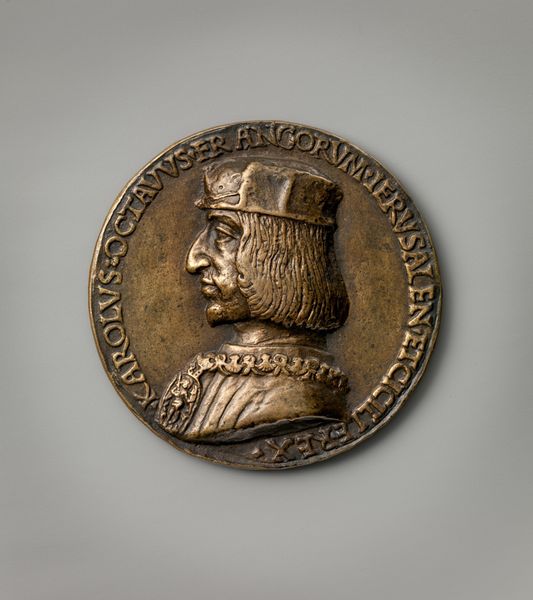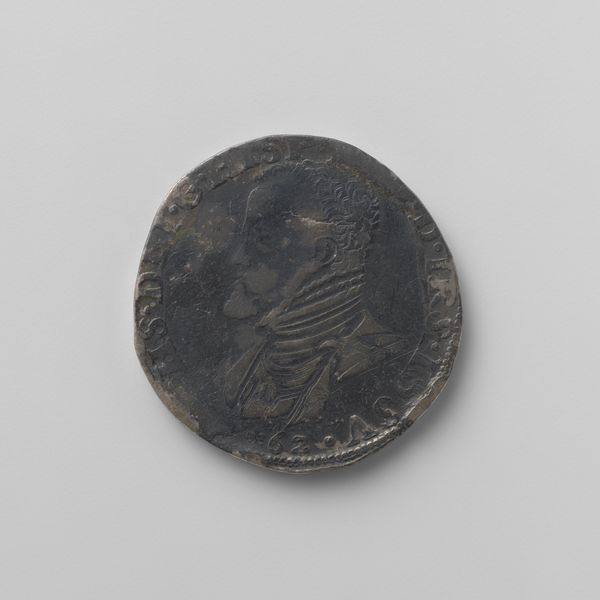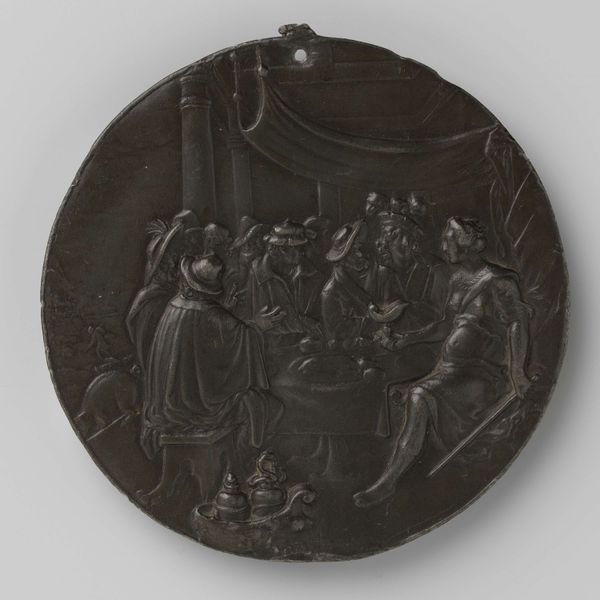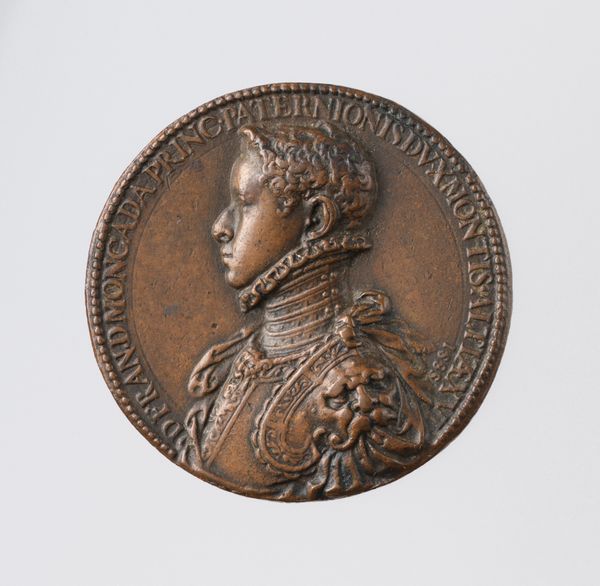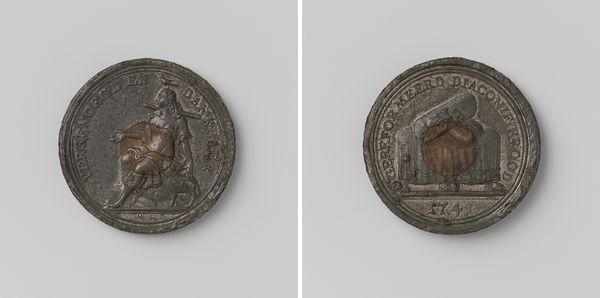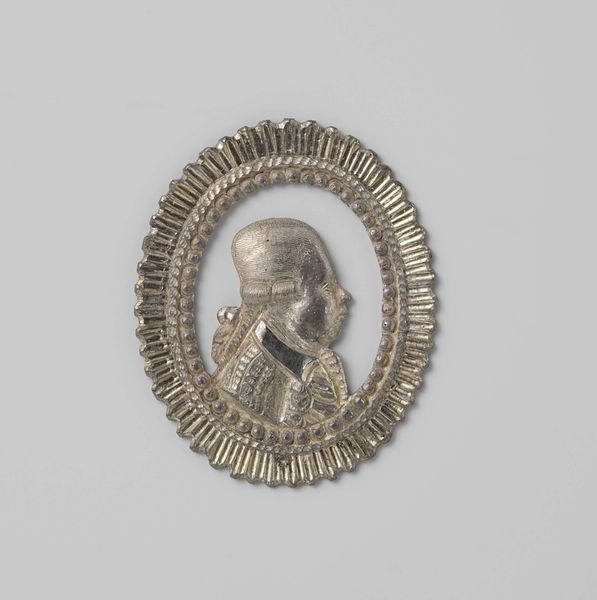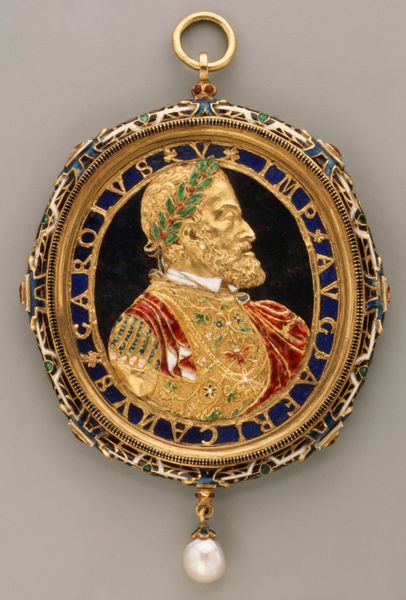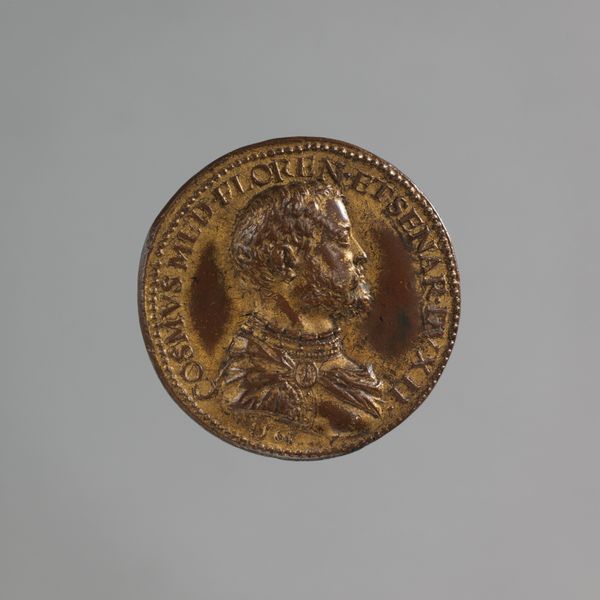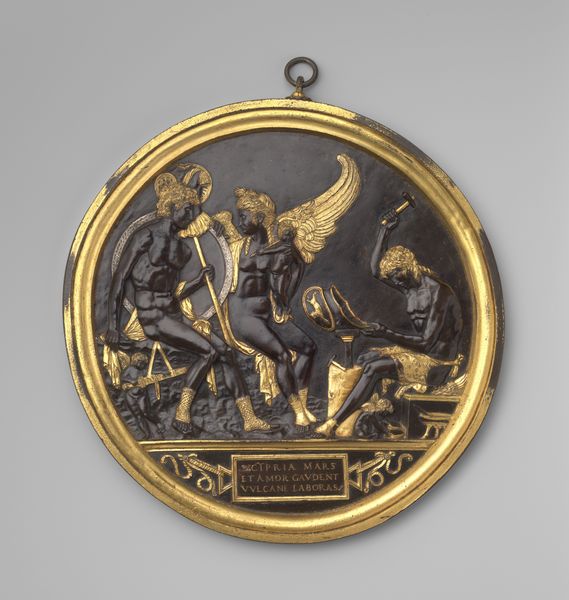
metal, relief, sculpture
#
portrait
#
metal
#
relief
#
11_renaissance
#
sculpture
#
history-painting
Dimensions: diameter 10 cm, diameter 14 cm
Copyright: Rijks Museum: Open Domain
This portrait of Henry VIII was likely made by Robert Town from black basalt clay, a material sometimes called ‘black stoneware.’ What is really striking about this object is that this kind of ceramic was usually associated with industrial production. We see that the clay body itself is deeply matte, as if almost charred – it absorbs light and shows the crisp details of the king’s features and luxurious clothing. The red border with gold vine leaf detailing contrasts against the dark clay, and the whole artwork has been framed with metal to highlight the importance of the artwork. The act of modeling clay is an intimate process, quite different from the high status portraiture that the image of Henry VIII usually conjures. In the 18th century, black basalt was associated with Josiah Wedgwood, who was a staunch abolitionist. In this context, such an artwork made from this material could be a very knowing comment on the political system of the time. By considering materials, making, and context, we come to a fuller understanding of an artwork, and challenge traditional distinctions between fine art and craft.
Comments
No comments
Be the first to comment and join the conversation on the ultimate creative platform.
